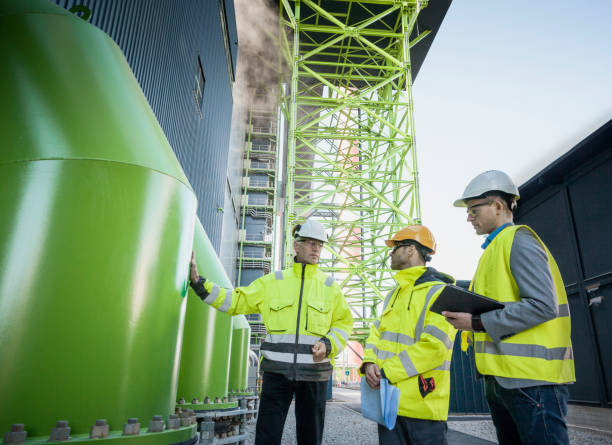Biomass energy, obtained from organic matter, is a renewable and sustainable source of energy that may be used to generate electricity and other types of power. Manure, forest debris, scrap lumber, mulch, sewage, some crops, and various types of waste residue are examples of common resources that may be utilized to create biomass energy fuel.
What is Biomass Energy
Biomass energy is a renewable energy source since it includes solar energy. biomass energy is an organic substance derived from plants and animals. Photosynthesis is the process by which chlorophyll in plants receives solar energy by transforming carbon dioxide in the atmosphere and groundwater into carbohydrates. When these plants are burnt, the same energy that they received from the air is released.
When these plants and animals are burnt, they decompose into carbon dioxide and water, releasing the sun’s energy. In this sense, biomass energy is a renewable energy source since we can always grow more crops and plants, and garbage will always exist. This sustainable energy source will exist indefinitely as long as biomass energy is generated. Plants, crop wastes, wood chips, maize, and other forms of rubbish are examples of biomass energy.
How Biomass Energy Works
According to research, utilizing biomass energy as a source of energy offers various advantages over using fossil fuels, and it helps to reduce greenhouse gas emissions. To be created, the organic material must go through a biomass energy conversion process, of which there are various options.
Bio-digestion of Biomass Energy
Also known as anaerobic digestion. Bio-digestion is the process by which bacteria break down organic material in the absence of air to produce biogas, which is then transformed into electricity.
Combustion of Biomass Energy
Organic matter is burned in this method to generate heat, which may then be utilized to generate electricity by boiling water to make steam. The steam turns a shaft, which activates a generator, which creates power.
Fermentation of Biomass Energy
Fermentation uses yeast to convert sugar from organic material into alcohol, often known as ethanol.
Gasification of Biomass Energy
Organic matter is transformed into carbon dioxide, hydrogen, and carbon monoxide using heat (without combustion) and a little quantity of steam or oxygen in gasification. The resulting gas combination is a sort of fuel known as syngas or producer gas, which may be used for heating, power production, and a variety of other purposes.
Pyrolysis of Biomass Energy
Organic material decomposes at high temperatures in the absence of oxygen during pyrolysis. Without oxygen, organic matter does not burn and instead degrades into a liquid known as bio-oil or a solid known as bio-char or syngas.
What is Biomass Energy used for?
Biomass energyis often used to create heat, and at the industrial level, it is occasionally used to generate electricity, albeit this is a more tedious process. Home biomass energy boilers can be installed for warmth (underfloor heating) and water heating.
What are the benefits of using biomass energy?
As previously said, biomass energy is a more environmentally friendly and organic renewable energy source. According to National Geographic, it is efficient because plants and algae may develop in a very short period of time, while other sources — such as lumber trees — can be made accessible regularly and in an environmentally benign manner if cultivated and cared for in a sustainable manner.
Sustainable crops, plants, and trees can also reduce carbon emissions in the atmosphere since they can absorb carbon dioxide on their own. Fixed kinds, such as switchgrass, are inexpensive and simple to cultivate, and may be used as a food source for cattle. Harvesting biomass is also simpler and more efficient, since a certain quantity can be utilized as needed without wasting any.

What are the drawbacks of using biomass energy?
Although biomass is certainly cleaner than nonrenewable sources, it does have some drawbacks. According to Syntech Bioenergy, certain types must be fortified with fossil fuels because they aren’t strong enough on their own, and burning materials is yet another way for carbon dioxide to be released into the atmosphere. Meanwhile, many are concerned that relying on it too heavily would result in an increase in deforestation, which is another major contributor to global warming.
We hope to be able to convert to solar and wind energy sooner rather than later, but in the meanwhile, biomass energy might serve as a reliable transitional energy source.
